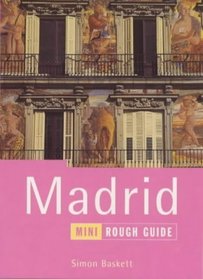Search -
The Mini Rough Guide to Madrid, 2nd Edition (Rough Guides)
The Mini Rough Guide to Madrid 2nd Edition - Rough Guides
Author:
INTRODUCTION Madrid became Spain’s capital city at the whim of one man, Felipe II. Its site possesses few natural advantages – a fierce climate, no harbour and a poor excuse for a river – but it lies exactly in the centre of Spain, and in 1561, Felipe decided to base the formerly itinerant court here to avoid giving too much powe... more »
Author:
INTRODUCTION Madrid became Spain’s capital city at the whim of one man, Felipe II. Its site possesses few natural advantages – a fierce climate, no harbour and a poor excuse for a river – but it lies exactly in the centre of Spain, and in 1561, Felipe decided to base the formerly itinerant court here to avoid giving too much powe... more »
ISBN-13: 9781858285351
ISBN-10: 1858285356
Publication Date: 7/1/2000
Pages: 320
Edition: 2nd
Rating: ?
ISBN-10: 1858285356
Publication Date: 7/1/2000
Pages: 320
Edition: 2nd
Rating: ?
0 stars, based on 0 rating
Genres:




